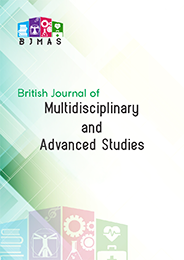Soil Analysis Using Machine Learning
DOI:
https://doi.org/10.37745/bjmas.2022.0350Abstract
India's agriculture sector employs the most people. Here it is: Agriculture employs around 60% of the Indian population and accounts for about 18% of India's GDP; yet, low productivity is due to a lack of research in this industry. Water logging, soil erosion, nitrogen shortage, and other issues plague Indian agricultural land. These are the primary causes of agriculture's low productivity. A farmer must spend a significant amount of time and money on farming, which is more extensive and time intensive than using a tractor. As a result, the cost of agriculture has increased. It is critical to use machine learning techniques and computational research to the agriculture industry in order for India to become a better quantity and quality food producer. ML approaches are particularly beneficial for building relationships and abstracting patterns between disparate data sets, as well as forecasting a realistic outcome as an output. It can be successfully implemented in the Indian agriculture sector to increase efficiency. We've talked about how machine learning techniques can be used in the Indian agriculture industry to assess soil fertility. Agriculture has long been one of the most fascinating study and analytical topics. This research aims to assess soil data based on a variety of characteristics, classify it, and increase the efficiency of each model using multiple terms and classifications. The major goal of this study and analysis is to classify soil fertility (behavior) indices by area using village-level soil fertility data.
Downloads
Downloads
Published
Versions
- 25-11-2023 (2)
- 25-11-2023 (1)












